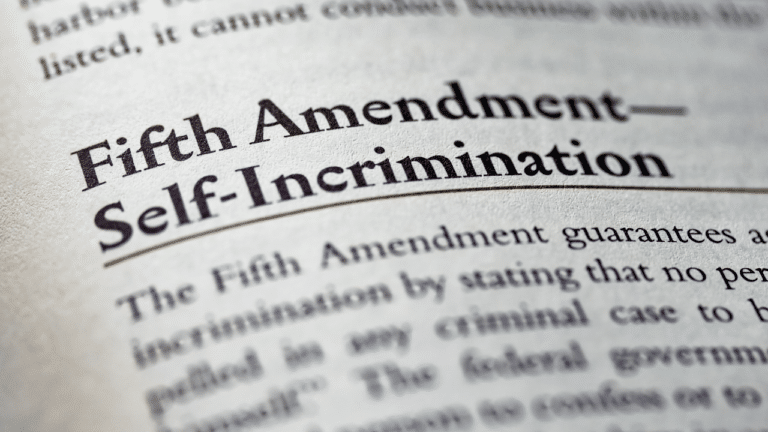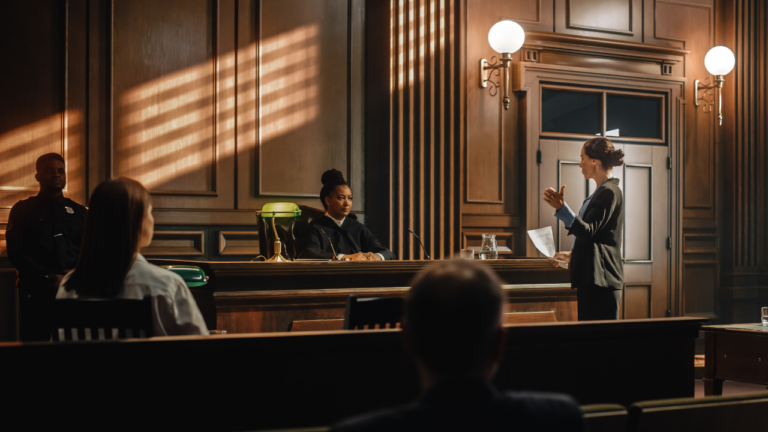
The Ninth Amendment to the Constitution of the United States protects the fundamental rights not enumerated in the Bill of Rights or the body of the Constitution.
The original meaning of the Ninth Amendment has been a topic of debate among scholars and justices over the last century and a half. Some scholars and judges argue it is to be read alongside the Tenth Amendment reservation of rights to the States and its people. Others contend the Ninth Amendment was intended to preserve the fundamental rights to privacy, and other rights recognized by the U.S. Supreme Court as protected by the substantive due process clause of the Fourteenth Amendment.
WHAT IS THE TEXT OF THE NINTH AMENDMENT TO THE UNITED STATES CONSTITUTION?
U.S. Const. Amend. IX. CONSTRUCTION OF ENUMERATED RIGHTS.
The enumeration in the Constitution, of certain rights, shall not be construed to deny or disparage others retained by the people.
WHAT IS THE BACKGROUND AND CONTEXT OF THE NINTH AMENDMENT IN THE BILL OF RIGHTS?
The Framers of the U.S. Constitution, including John Adams, Thomas Jefferson, and James Madison, recognized the importance of protecting individual liberties from government intrusion. Their intention, made clear by the Preamble, was to “form a more perfect Union, establish Justice, insure domestic Tranquility, provide for the common defense, and promote the general Welfare.”
To assuage the Democratic-Republicans and Anti-Federalists, framer James Madison drafted the first ten constitutional amendments, known as the Bill of Rights, based on the desire to avoid another tyrannical government they had fought so hard against. The Federalist party secured the ratification of the U.S. Constitution by promising the addition of amendments codifying fundamental liberties outlined in the Bill of Rights.
The Bill of Rights guarantees fundamental freedoms often restrained by despotic, oppressive governments. It encompasses “the great rights” such as the first amendment freedom of speech and the press, the fourth amendment right to be free from unreasonable government searches and seizures, the eighth amendment prohibition against cruel and unusual punishment, and the second amendment right to keep and bear arms.
The first eight amendments are considered the “choicest privileges of the people” in the United States, and are protected from government overreach. Many of these rights were incorporated through the Fourteenth Amendment Due Process Clause to apply to state governments as well as the federal government.
The first ten amendments were proposed to several state legislatures by the First Congress on September 25, 1789. New Jersey was the first State to ratify the Bill of Rights on November 20, 1789, followed by Maryland, North Carolina, South Carolina, New Hampshire, Delaware, Pennsylvania, New York, and Rhode Island in 1790. Vermont and Virginia ratified the Bill of Rights in 1791, resulting in its adoption. The Legislatures of Connecticut, Georgia, and Massachusetts held out on ratification until 1939.
What is a natural right in the U.S. Constitution?
John Locke considered life, liberty, and property to be the natural rights of men, not to be taken away by those who govern. See John Locke, Second Treatise of Government 2 (1960). This recognition of innate human rights existed in common law, as it does today. Justice McLean wrote of natural laws: “[t]his is a field which judges cannot explore.” 17 F.Cas. 335, 339 (C.C.D. Ohio 1853).
Former Circuit Judge Michael McConnell of the U.S. Court of Appeals for the Tenth Circuit echoed Judge McLean’s sentiment, and the Lockean social compact. Michael W. McConnell, The Ninth Amendment in Light of Text and History. Essentially, following John Locke’s legal and philosophical social theories, natural rights and laws are not for the courts to decide: “The essence of the Lockean social compact is that we relinquish certain of our natural rights and we receive, in return, more effectual protection for certain of our rights, plus the enjoyment of positive rights . . . created by the action of political society.” Id.
WHAT IS THE HISTORICAL ORIGIN OF THE NINTH AMENDMENT TO THE UNITED STATES CONSTITUTION?
The Framers were heavily influenced by the great thinker John Locke, an English philosopher and physician. See Gundy v. U.S., 139 S.Ct. 2116 (2019) (Gorsuch, J., dissenting). Locke famously wrote that men are “all free, equal, and independent,” and “no one can be . . . subjected to the political power of another without his own consent.” John Locke, Second Treatise of Government 8 (1690). Locke also philosophized that those who “unite into a community, must be understood to give up all the power, necessary to the ends for which they unite into society.” Id. In other words, the people forfeit only those rights necessary for effective self-government, not all rights.
Taking Locke’s liberalism into consideration, the Anti-Federalists, led by Patrick Henry, argued the Constitution failed to protect the unalienable rights and freedoms from the government. In response, the Federalists insisted the Ninth Amendment refers to rights that the government may not infringe upon. Fundamental rights not explicitly mentioned in the Constitution are therefore protected by the Ninth Amendment.
The Amendment is almost entirely the work of James Madison. It was introduced in Congress by him and passed in the House of Representatives and Senate with little or no debate, and no change in the language. It was put forth to quiet fears expressed that a bill of specifically enumerated rights could not be sufficiently broad to cover all essential rights, and the specific mention of certain rights would leave all others unprotected.
According to James Madison, the Bill of Rights specifies two types of rights: those rights that are relinquished to the Legislature, such as trial by jury, and the natural rights retained by the people who have principal ownership over them. In presenting the proposed Amendment, Madison said:
“It has been objected also against a bill of rights, that, by enumerating particular exceptions to the grant of power, it would disparage those rights which were not placed in that enumeration; and it might follow by implication, that those rights which were not singled out, were intended to be assigned into the hands of the General Government, and were consequently insecure. This is one of the most plausible arguments . . . but, I conceive, that it may be guarded against. I have attempted it, as gentlemen may see by turning to the last clause of the fourth resolution (the Ninth Amendment).” I Annals of Congress 439 (Gales and Seaton ed. 1834).
Justice Story explained, in light of James Madison’s submission, that the Framers did not intend that the first eight amendments be construed to exhaust the basic and fundamental rights which the Constitution guaranteed to the people:
The clause was “manifestly introduced to prevent any perverse or ingenious misapplication of the wellknown maxim, that an affirmation in particular cases implies a negation in all others; and, e converso, that a negation in particular cases implies an affirmation in all others.” II Story, Commentaries on the Constitution of the United States 626–27 (5th ed. 1891).
In fact, the Tenth Amendment also makes clear that the States and the people retain all those powers at common law not expressly delegated to the Federal Government.
The text is straightforward: the Constitution contemplates other rights besides those specifically listed in the first eight amendments and elsewhere. But no Supreme Court decision has ever relied on the Amendment as an exclusive or even primary rule of decision, and the scholarly debate continues.
WHAT ARE EXAMPLES OF NINTH AMENDMENT RIGHTS?
Following Locke’s philosophy, Judge McConnell give examples of unenumerated natural rights that might be ‘‘retained by the people’’: the right to control the upbringing of one’s children, the right to travel, the right to engage in non-procreative sex, the right to read, the right to control one’s own medical care, the right to choose one’s own friends and associates, the right to pursue a job or profession, the right of self-defense, and many others. During the Bill of Rights debates, reference was jokingly made to the right to wear a hat, and to go to bed when one pleases. Michael W. McConnell, The Ninth Amendment in Light of Text and History.
- In another example, Justice William O. Douglas argued in his dissent in Olff v. East Side Union High School District that a 15-year-old boy should be allowed to attend public school with the personal hair style of his choice. Citing the Ninth Amendment fundamental rights retained by the people, Justice Douglas would have held “[o]ne’s hair style, like one’s taste for food, or one’s liking for certain kinds of music, art, reading, recreation, is certainly fundamental in our constitutional scheme—a scheme designed to keep government off the backs of people.”
The U.S. Supreme Court has never upheld an unenumerated right under the Night Amendment. While there are no doubt certain unwritten fundamental liberties, the Court has used the Fourteenth Amendment Due Process Clause to articulate the right to privacy, which encompass the rights to marital privacy and the use of contraception, as well as the right to sexual privacy between consenting adults. See Lawrence v. Texas, 539 U.S. 558 (2003).
What is the scholarly interpretation of the Ninth Amendment?
One can scour any law library and find more articles written on the Ninth Amendment than ever anticipated. Many scholars, including John Hart Ely, considered the Ninth Amendment a joke. See Thomas B. McAffee, The Original Meaning of the Ninth Amendment, 90 Colum. L. Rev. 1215 (1990). Judge Robert Bork famously referred to the Ninth Amendment as an “inkblot” before the Senate Judiciary Committee in 1987. See Kurt T. Lash, Inkblot: The Ninth Amendment as Textual Justification for Judicial Enforcement of the Right to Privacy, 80 U. Chi. L. Rev. Dialogue 219 (2013).
Scholar Randy Barnett’s Texas Law Review article sparked even more debate with his handful of models. See Randy E. Barnett, The Ninth Amendment: It Means What it Says, 85 Tex. L. Rev. 1–82 (1995). There is the originalist, or “individual rights model” of the Ninth Amendment which argues the Ninth Amendment is one of the “penumbras” giving rise to privacy.
By contrast, Kurt T. Lash’s “federalism model” suggests that James Madison wrote the Ninth Amendment as a response to the anti-federalist concerts that the federal government would interpret its own powers in a way that would infringe on their rights. See Seth Rokosky, Denied and Disparaged: Applying the “Federalist” Ninth Amendment, 159 U. Pa. L. Rev. 275 (2010).
Arguably, the Amendment has only been rendered “meaningless” by those who refuse to acknowledge it: the U.S. Supreme Court—Randy Barnett lamented that the Ninth Amendment “has been so tragically neglected by the Supreme Court over the past two centuries.” Raoul Berger, The Ninth Amendment, As Perceived by Randy Barnett, 88 Nw. U. L. Rev. 1508 (1994). Instead, the Ninth Amendment has been put forth as a powerful method of protecting individual liberties. But formal adjudications of “how?” and “what?” will likely remain unanswered search terms.
According to former Circuit Judge Michael McConnell, the ‘‘other rights’’ to which the Ninth Amendment refers, which are ‘‘retained’’ by the people, comprise the set of natural rights that have not been surrendered or relinquished under the social compact in order to promote the good, prosperity, and safety of society. This set does not include positive rights, which are not ‘‘retained’’ but rather are created by the social compact—such as the enforcement of contracts. Nor does it include those rights ‘‘expressly stipulated for in the Constitution by the declaration of rights.’’Michael W. McConnell, The Ninth Amendment in Light of Text and History.
What is the separation of powers problem with the Ninth Amendment?
The separation-of-powers problem is not lost on scholars. As Randy Barnett wrote, and Raoul Berger agreed, “[w]hen faced with textual provisions as completely open-ended as these, any judicial interpretation of unenumerated rights hardly seems an interpretation at all.” Raoul Berger, The Ninth Amendment, As Perceived by Randy Barnett, 88 Nw. U. L. Rev. 1508 (1994).
At the same time, “[i]t is emphatically the province and duty of the judicial department to say what the law is.” Marbury v. Madison, 5 U.S. 137 (1803). And as Justice Black wrote in his dissent in Griswold, the Ninth Amendment “was intended to limit the Federal Government to the powers granted expressly or necessarily by implication.” It could not, however, “be used as a weapon of federal power to prevent state legislatures from passing laws they consider appropriate to govern local affairs.”
HOW IS THE NINTH AMENDMENT TO THE UNITED STATES CONSTITUTION USED?
The U.S. Supreme Court has struggled for a reasonable approach to ostensibly formidable rights claims that do not easily fit into specific constitutional provisions—thus the unenumerated rights. If, for example, a state made it a crime to walk down the street, courts would surely strike down the law as unconstitutional, but whether it would do so as a matter of privacy, liberty, or some other means is difficult to predict. Chase J. Sanders, Ninth Life: An Interpretive Theory of the Ninth Amendment, 69 Ind. L.J. 759 (1994).
The Ninth Amendment has been largely ignored by courts because it appears incapable of practical interpretation. There has been no workable mechanism for empowering courts to identify the “other” rights retained by the people that does not dramatically enlarge the power of the judiciary over the legislative and executive branches.
Critics of the Ninth Amendment’s potentially unbridled judicial authority point to abortion as the leading hotly-debated topic in America, claiming it could be used to create a right thereto where none exists. See Cameron S. Matheson, The Once and Future Ninth Amendment, Boston College Law Review 179 (1994). But judicial activism is not a new concept, because the Constitution and Declaration of Independence leave several areas for judicial interpretation and inclusion of unenumerated protections. See Troxel v. Granville, 530 U.S. 57 (2000) (Scalia, J., dissenting).
What is the difference between substantive due process and the Ninth Amendment?
The Fifth and Fourteenth Amendments have parallel provisions preventing the federal and state governments from denying “life, liberty, and property without due process of law.” Generally, the Due Process Clause of the Fourteenth Amendment is used to encompass proposed rights through the liberty interest contained therein. The text of the Constitution, however, requires that the Ninth Amendment govern whether the people retain an unenumerated right.
Due process, originally believed to be a mechanism to ensure procedural fairness when the government attempts to deny life, liberty, or property, was turned into a method of determining whether fundamental rights exists that are not enumerated within the Constitution. Substantive due process is a judicial creation, void of text-based constitutional support, that has arguably provided unpredictable legal standards and results because it can be bent to meet any ends necessary. Christopher J. Schmidt, Revitalizing the Quiet Ninth Amendment: Determining Unenumerated Rights and Eliminating Substantive Due Process, 32 U. Balt. L. Rev. 169 (2003).
In Troxel v. Granville, the U.S. Supreme Court used Fourteenth Amendment substantive due process to conclude that parents have a fundamental right to make decisions concerning the care, custody, and control of their children—“The Fourteenth Amendment’s Due Process Clause has a substantive component that ‘provides heightened protection against government interference with certain fundamental rights and liberty interests.’” While the Court could have easily upheld this right under the Ninth Amendment, it opted to recognize this fundamental right under the judicially-created substantive due process clause.
NINTH AMENDMENT TO THE UNITED STATES CONSTITUTION
The language and history of the Ninth Amendment reveal that the Framers of the Constitution believed that there are additional fundamental rights protected from governmental infringement, which exist alongside those fundamental rights specifically mentioned in the first eight constitutional amendments. But judges, time and time again, have refrained from using the Amendment, perhaps to avoid the appearance of judicial activism.
Although the Ninth Amendment plays virtually no role in modern constitutional litigation, it has been the subject of multiple books, articles, and symposia. Francis Bacon once observed: “[P]hilosophers, they make imaginary laws for imaginary commonwealths; and their discourses are as the stars, which give little light because they are so high. For the lawyers, they write according to the states where they live, what is received law and not what ought to be law.” See Raoul Berger, The Ninth Amendment, As Perceived by Randy Barnett, 88 Nw. U. L. Rev. 1508 (1994). Regardless of which scholarly interpretation is correct, whether courts will use them in practice is unknown.
NINTH AMENDMENT COURT CASES
The United States Supreme Court has seldom interpreted and applied the Ninth Amendment since its adoption in 1791, but a few Justices have mentioned the Amendment’s utility.
In Griswold v. Connecticut, the U.S. Supreme Court held the state law forbidding the use of contraceptives unconstitutionally intrudes upon the right of marital privacy. In Justice Goldberg’s concurrence, he concluded:
“To hold that a right so basic and fundamental and so deep-rooted in our society as the right of privacy in marriage may be infringed because that right is not guaranteed in so many words by the first eight amendments to the Constitution is to ignore the Ninth Amendment and to give it no effect whatsoever. Moreover, a judicial construction that this fundamental right is not protected by the Constitution because it is not mentioned in explicit terms by one of the first eight amendments or elsewhere in the Constitution would violate the Ninth Amendment.”
Justice Potter Stewart, in response to Justice Goldberg’s concurrence, dissented in Griswold, arguing the Ninth Amendment could not be read to declare a law against contraception unconstitutional:
“[T]o say that the Ninth Amendment has anything to do with this case is to turn somersaults with history . . . . Until today no member of this Court has ever suggested that the Ninth Amendment meant anything else, and the idea that a federal court could ever use the Ninth Amendment to annul a law passed by the elected representatives of the people of the State of Connecticut would have caused James Madison no little wonder.”
In Troxel v. Granville, Justice Scalia criticized the Court’s use of the substantive due process clause, and explained the right of parents to direct the upbringing of their children is among the “unalienable rights” with which the Declaration of Independence proclaims “all men . . . are endowed by their Creator.” This right, in Scalia’s view “is also among the ‘othe[r] [rights] retained by the people’ which the Ninth Amendment says the Constitution’s enumeration of rights ‘shall not be construed to deny or disparage.’”

















